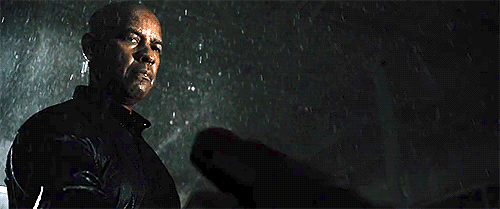29th November, 2022
By Strategy Planners

The movie “Chef” tells the story of a once successful chef who quits his job amidst internal conflict at his occupation and refits an old food truck in an effort to reclaim his creative promise and successful reputation. He teams up with his son and past colleague on a new business venture, however the effort is fraught with many hazardous elements as they drive across America to serve food and re-establish his success. This blog will take an in-depth investigation into the physical, chemical, biological, psychosocial, and ergonomic hazards encountered in the film and make recommendations to mitigate those hazards, using the Occupational, Safety and Health (OSH) Standards.
Additionally, the quality of the goods and services captured in the movie will also be assessed. In order to assess quality of goods and services in the movie, Garvin’s eight quality dimensions will be used. The quality assessment will focus on the food truck “El Jefe” as a business venture and the food and service that Chef Casper and his team prepares for consumers.
Figure 2: YouTube trailer of the movie Chef (2014)
DIMENSIONS OF QUALITY
1. Perceived Quality
Perceived quality is the ‘pull’ that actually gets people to purchase a product. It is the perception of the customer (Mitra and Golder 2006) that allows them to make the decision to purchase or not. Within the movie, it is noted that when Carl and they were touring with the truck, the postings by Percy on Twitter generated a lot of interest in the product. From the mouth-watering photos and mini videos that served to generate overwhelming interest in the food truck, to the large crowd of customers as they moved from city to city, it is clear that the offerings were perceived to be of substantial quality. This was further evidenced by the very long line of customers awaiting them whilst they stopped for Beignet at Café Du Monde. In this scene, Percy admitted to taking pictures and videos of their journey and posting them on social media. Carl recognized that it served as a marketing strategy that appealed to the customers who perceived that they had something of value to offer. Hence, even though the truck was closed, and there was a level of uncertainty as to whether it would be open for business on that day, Carl and Percy returned from their Beignet escapade to discover an overwhelming crowd of customers eager to try their sandwiches.

Figure 3: This image released by Merrick Morton and Open Road Films shows Emjay Anthony, left, and Writer-director-actor John Favreau, drawing a crowd on Frenchmen Street in a scene from “Chef” (2014).
Notably, the scene in which Ramsey, the food critic, approached Carl and indicated that he had purchased his sandwich, and heaped praises upon him, whilst simultaneously offering to fund a new restaurant business venture with Carl at the helm, is a testament to his perceived quality of Carl’s product offerings. Ramsey’s expectation/perception was so great that he had someone purchase the sandwich on his behalf, as he knew he would have been denied because of their previous rift. Additionally, the belief and encouragement of Inez (his ex-wife, whom he eventually remarried) to launch out on his own and start the food truck, and the extent she went to give him a start (her ex-husband) is also a strong testament to the perceived quality of his sandwich.
2. Performance
In order to assure quality performance, one must be able to measure it. In this film the product performance being measured is the food. While the film itself did not provide much statistical data as to the performance of the product, it could have been gauged using information such as the continued increase of followers on Twitter, and the continued increase in customer crowds wherever they went. The steady increase of followers @chefcarlcasper as they journeyed along and sold their product from city to city, can be alluded to the product performing positively.

Figure 4: Depiction above shows a recreation of the traditional Mojo Pork Cubanos, the signature sandwich emphasized in the movie Chef (2014).
As they continued to grow in popularity, more persons kept seeking them out, therefore the long lines observed at each stop is a good indication of the product’s performance and a good way to measure same. Another method would be the sales statistics for the food truck. That is, measuring the number of products they were able to sell and finding the average of which products are more consistent in their sales than others. This is in conjunction with an analysis of the volume of sales for each particular product offered on the menu over a period of time.

Figure 5: Crowds gathered outside El Jefe Food Truck as a result of Percy’s marketing campaign.
There is also a subjective measurement of the performance, which is the taste. Taste is subjective and based on someone’s particular preference. For example, one person who enjoys Mexican and Cuban food may enjoy what El Jefe has to offer as opposed to someone who prefer Italian food. As such this performance measurement based on taste should be understood as subjective and maybe even opinion based. A good example of this is observed in the closing act of the movie where the food critic Ramsey offered to invest in Carl’s business and commented on how amazing Carl’s food tasted. When it comes to measuring performance in this film though, there is not much to go on other than inference from the crowd, reaction of persons who tasted Chef Casper’s food and the offer made by Ramsey to invest in him. These are all positive signs of performance.
3. Features

Figure 6: This image by Merrick Morton/Open Road Films shows a snapshot of the food truck entitled “El Jefe Cubanos” from “Chef (2014).”
The food truck utilized in the movie Chef, was a 1978 Chevrolet P30 Walk-In van, which the U.S. government classified as a truck. The Chevrolet truck was “Built to Stay Tough”. A major feature of the truck was the wrap around double doors at the rear of the vehicle. They folded back flush with the side panels of the truck for easy access and would be a plus for anyone in the food truck business. This would have allowed for easier loading and off-loading of equipment and supplies. As seen in one scene of the movie, with the help of the Latino workmen and some good old-fashioned muscles and brawn, they were able to maneuver a brand new commercial sized deep fryer and range with a convection oven into the truck. Other features of the food truck that would have added to the quality and influence potential buyers of this particular vehicle were, a flat top grill, deep fryer, freezer, prep table refrigerator and waste bins. The interior of the truck also contained quite a variety of shelves for storage, a necessity for the food truck business, along with an exhaust system and the walls and ceiling lined with quilted stainless steel. The truck was also customized with a side window and awning, making it easy to serve customers passing by when parked along a sidewalk.
Figure 7: This image by Silver Star Metal Fabricating Inc. depicts the interior of a food truck showing quilted stainless steel interior
4. Aesthetics
In today’s oversaturated product and service environment, consumers have become adept at utilizing aesthetics to identify and differentiate aspects of quality between brands or products. However, according to Garvin (1987), aesthetics, which refers to the look, feel, sound, taste or smell of a product is a subjective dimension, reflecting an individual’s personal judgements and preferences. In assessing the quality of the food truck in the movie Chef (2014), the Cuban cultural heritage was most evidently displayed. The look of the food truck was complete with a bright and resplendent color palette that highlighted the truck brand (El Jefe), its product attribute (pork used in Cuban sandwiches) and an acknowledgement to the culture of inspiration (Cuba).
Figure 8: Logo adapted from “El Jefe” food truck in a scene from Chef (2014). Merrick Morton, AP, Open Road Films.
Throughout the film, other aspects of the aesthetic quality could only have been perceived. According to the main character (Carl Casper), the food truck maintained “solid bones” or sound integrity for a used vehicle which contributed to the customers perception of quality. Therefore, the repairs to the vehicle when compared to its original state, allowed customers to perceive that the food offered was being prepared in a clean environment that aligned with health codes and quality standards.
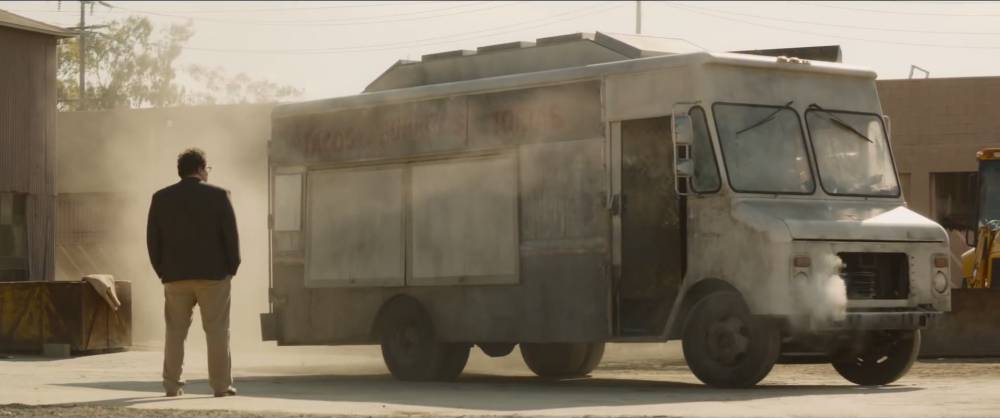
Figure 9: This image by Merrick Morton/Open Road Films shows the original condition of the food truck given to Carl Casper by Robert Downey Jr. character Marvin from “Chef (2014).”

Figure 10: This image by Merrick Morton/Open Road Films shows a snapshot of the repaired and redeveloped food truck entitled “El Jefe Cubanos” from “Chef (2014).”
With respect to taste and smell, it can only be deduced that based on customers’ purchase intentions, market interest from advertising, actual sales and the food critic’s review and interest to fund the business, that the taste and smell of the food being prepared by the food truck is remarkable. The Mojo Pork Cubanos sandwiches, the Media Noche, Yuca Fries with banana ketchup, BBQ Brisket Sliders, Arroz con Pollo, as well as the Café Du Monde Beignets on the food truck’s menu is perceived to hold aesthetic appeal to customers which is apparent by the long lines and large crowds by the business. Therefore, in terms of the food truck’s aesthetics can be concluded that the business is of optimal quality.
:format(webp)/https://www.thestar.com/content/dam/thestar/life/food_wine/2014/06/05/learn_to_make_the_cubanos_from_the_chef_movie/cubanos.jpg)
Figure 11: Depiction above shows a recreation of the traditional Mojo Pork Cubanos, the signature sandwich emphasized in the movie Chef (2014).
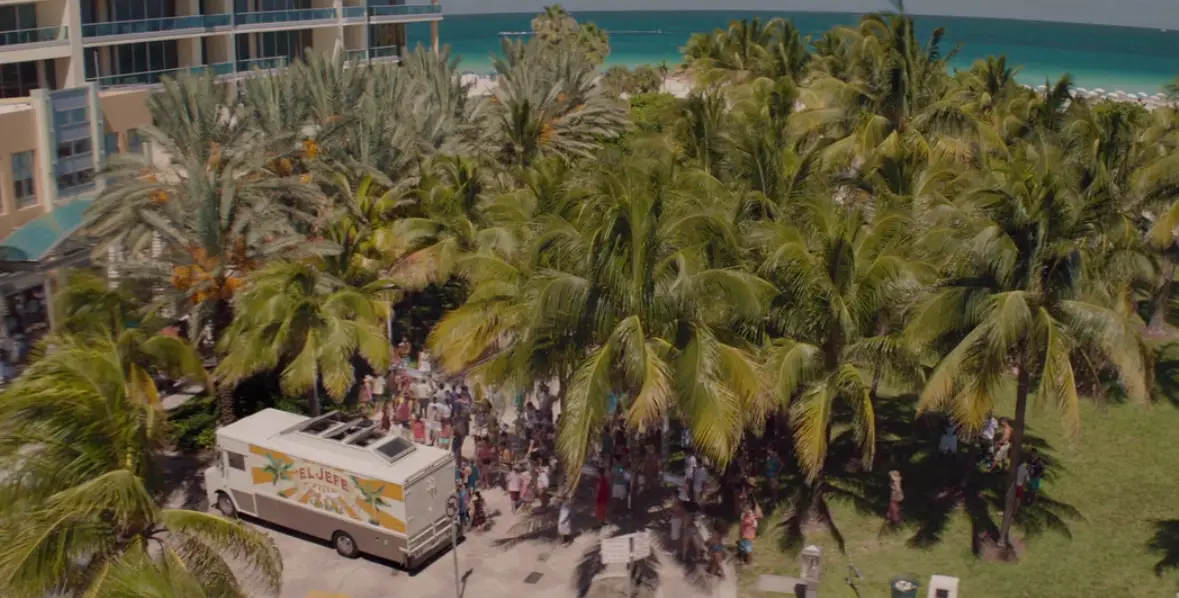
Figure 12: This image highlighted by Legendary Trips shows the first location of the food truck’s success in South Beach, Miami.
5. Serviceability
Another dimension of quality is serviceability, which measures how easy it is to maintain and fix a product. Serviceability is a state of change that impacts individuals who require services as well as the goods and services that are provided. When customers obtain services that exceed their expectations, serviceability might be seen as favorable. The quality of these services might be seen as subpar if they fall short of what customers desire. Service, according to Kotler (2002), is the behavior or activity of a customer in satisfying a need or desire in a way that benefits the consumer and makes him or her feel satisfied. Kotler states, this behavior might take place both before and after the actual purchase transaction.
Serviceability measures how simple it is for customers to get help, how accommodating the staff is, and how dependable the service is. It also highlights the staff’s professionalism and behavior, as well as how well a product may be delivered. Carl, the main character, created his meals with professionalism both while he worked in the restaurant and when he went out on his own. He was seen going to local markets to purchase quality products. Additionally, while he was assisted by his son, working on his mobile restaurant, he emphasized the importance of marketing his brand to his son, when his son attempted to sell a customer a burnt sandwich.

Figure 13: This image by Merrick Morton/Open Road Films shows a snapshot of the food truck entitled “El Jefe Cubanos” from “Chef (2014).”
Carl went on to emphasize to his son the significance of figuring out whether a product can be corrected, in order to evaluate whether the customer is happy with the company’s redress practices. This is “Chef’s”’ serviceability, as it demonstrates how much the customer values the services and, in turn, how well-regarded the company is. Each business has its own procedures for managing complaints, and not all of them place the same value on serviceability. As an illustration, some businesses make every effort to address the complaints they receive, but others do not provide any kind of service. As seen in the movie, Carl insisted on his brand, being untraditional and revolutionary while he was employed in the restaurant establishment. He was determined to dazzle the respected restaurant critic, with his inventive flair at a later gourmet event. But his boss was keen on upholding the restaurant’s previous ten-year standard. He complied with his boss’s request to the detriment of his career and ego.
Kotler defines customer satisfaction as “a layer of a person’s emotions that results from a comparison of the performance or results.” Carl’s son used a variety of social media channels to advertise his father’s business. This technique brought a number of advantages, such as improved customer satisfaction, an effect on follow-up purchases, and even the formation of loyal customers.
The evolution of an ever-more modern age has impacted human lives over time, and the food industry is no exception. Carl decided to challenge himself by marketing and distributing quick cuisine because he had excellent culinary skills, and it was both highly practical and natural for him to do so. This was obvious since consumers could be seen waiting in line for the dishes they had ordered. His popular trademark club sandwiches were one of them and were enjoyed by children, young adults, and seniors.
6. Durability
Durability is the measure of a product’s life cycle. It can be defined by the number of uses that one can get from a product before it deteriorates. In terms of the food truck, “El Jefe”, durability will also depend on how long the truck would be in operation before maintenance and repair becomes too expensive, and it becomes more feasible to purchase a new truck. According to Garrett (2014), the 1978 Chevrolet P30 Walk-In Van, was built on a P30 Chassi which is known as one of the most popular vans to have been manufactured at the time. It was well known for its affordability, weight handling abilities and maneuverability. Although the estimated lifespan of the truck is twelve (12) to twenty (20) years, and manufacturing was discontinued in the 1990’s, the P30 Chassi has transcended, thereby affirming its durability. Furthermore, although few, the van is still in existence and can still be found across the United States.
7. Reliability
Reliability can be defined as the probability of a product working fault free within a specific period of time (Garvin, 1897). The 1978 Chevy Walk-in Van was well known for its durability due to the P30 Chassi in which it was built on. The P30 was able to support up to 10,000 pounds GVW ad was later upgraded to handle even more weight. There were no major mechanical issues reported on the van except for its excessive fuel intake and the truck did not suffer any mechanical issues after its restoration during the working trip that Chef Carl and his team took across America. The van was built on a 454 V8 engine given its estimated size at 16 feet long as reported by Garrett (2014). This is a larger engine that would have proportionate to the size of the truck used in the movie. However, the larger the engine, the more fuel is required to run the vehicle which would have resulted in the trip being quite costly and routine maintenance necessary for optimal performance.
HAZARD CATEGORIES
1. Physical Hazards
The food truck industry presents many similar hazards to the traditional brick and mortar restaurants, and a few unique hazards as the business is operating in an exponentially smaller space. Physical hazards in relation to the El Jefe food truck in the movie were as follows,
1. Fire hazard from modified equipment. “Equipment modification was another unique area identified by the food truck owners and managers as essential to the food truck sector.” (Leandro, Stedefeldt and Nakano, 2019) It was further stated that “An increase in self-modified equipment cause concern in the area of fire safety.” (Leandro, Stedefeldt and Nakano, 2019). Food trucks use LPG and as such alteration of this equipment in any way is a definite risk to both workers and consumers.
Recommendation
- Equipment should be modified and installed by a licensed technician.
- Regular maintenance of equipment to ensure no leaks or defects of any kind.
- Equipment to be utilized according to manufacturer’s specifications only.
- Gas cylinders should be stored upright according to manufacturer’s guidelines
2. Burn hazards from hot surfaces, hot oil, and utensils. This risk is increased within the confines of the food truck, with staff having to maneuver around each other and the equipment within the truck.
Recommendation
- Ensure cooking equipment, pots and pans and utensils are in proper condition
- Non Slip flooring to prevent slips and falls within close proximity to hot surfaces and open pots
- Outfit fryers with splatter guards as per manufacturer’s specifications
- Proper training for workers on use of equipment with hot surfaces
- Implement policy for appropriate clothing, for example no loose fitting clothing that can get caught in an open flame or open toed shoes, as this increases the risk of burns to the feet from hot spills.
- Always use proper tools to handle hot items, mittens, cloths, silicone handle covers.
3. Cut hazards which can occur from the improper handling of knives. Whilst it was quite an endearing scene in the movie when the lead character purchased a chef’s knife and presented it to his son, without the proper training on the use of the tool as well as allowing its use by a minor, increased the risk for this hazard.
Recommendation
- Train workers on the proper use and handling of knives
- Only use knives for the intended purpose, not for opening cans, or boxes etc.
- Do not immerse knives in water where they cannot be seen
- Ensure there is proper storage for knives
4. The food truck is a mobile restaurant and as such this hazard is unique to this type of business. Collision hazard, with pedestrians or inanimate objects. Food trucks would operate for obvious reasons in busy areas of town where pedestrian traffic is heavy. In the movie chef we viewed in various locations crowds of persons waiting to try the famous Cuban sandwich served.
Recommendation
- Truck should only be driven by an experienced licensed driver
- Regular maintenance of the vehicle
- Ensure that all mirrors are in good order and the view of the driver is not obstructed in any way
- Follow all traffic regulations
2. Chemical Hazards
A chemical hazard is a chemical which can cause harm to one’s life or health. These chemicals can range from household cleaning products such as bleach and disinfectants to industrial chemicals such as degreasers. In commercial kitchens the most common chemical hazard faced by chefs are the use of cleaning chemicals to sanitize workstations and the kitchen. In the movie “Chef” we can see three hazards associated with chemicals being displayed during the time stamp of 1:01:12 to 1:03:30. In this scene, Carl Casper and his son Percy. Casper purchased cleaning chemicals to clean their newly acquired food truck. Whilst they did use PPE in the form of what seemed to be nitrile or rubber gloves, other forms of PPE were lacking.
The three hazards associated with chemical use that were seen in the movie are Inhalation, Absorption, and Ingestion.
Figure 14: YouTube video of Carl Casper and son Percy cleaning used food truck from the movie “Chef (2014)“
While the gloves worn would prevent absorption through the hands to an extent , there were still parts of the skin that were seen to be exposed whilst using these chemicals to clean the food truck. Once a harmful chemical is absorbed through the skin it passes through the epidermis, dermis and fatty tissues eventually making its way to the bloodstream. Once in the bloodstream it is then circulated throughout the body exposing other tissues and vital organs to the harmful effects of the chemical. These can then lead to acute and chronic illnesses or symptoms. For example, redness of the skin, burning sensations and rashes. Chronic illnesses can be dermatitis or forms of cancer. What can be used to prevent this would be task appropriate gloves such as chemical resistant gloves or disposable coveralls. This would completely isolate the skin from exposure to the chemicals that they were using to clean the truck, especially so for the chef’s son who is very young. It can also be recommended to acquire and keep the safety data sheet or SDS for the chemicals being used as these can be referred to in the event of exposure and will provide guidelines for things such as handling, storage and first aid.
Inhalation would be the accidental inhaling or breathing in of harmful vapors produced by the chemicals used to clean the truck. When the vapors are inhaled it makes its way through the respiratory system and to the lungs. From there it makes its way to the bloodstream and is circulated throughout the body affecting the tissues and vital organs. Some acute effects can be things like respiratory irritation or coughing, while chronic could be illnesses like forms of respiratory cancers.
Ingestion is another hazard that would exist when using cleaning chemicals. As can be seen in the film, Percy was using these cleaning chemicals that could have splashed on him and gotten into his mouth. If this happens, he could have also accidentally swallowed these cleaning chemicals. This accidental ingestion would cause the chemicals to be absorbed through the digestive system, where it would eventually reach the bloodstream, making its way to vital organs and tissues causing harm. Acute symptoms could include vomiting and nausea, while chronic can be things like digestive system cancers. To prevent them they could have used half faced respirators as this would drastically reduce the possibility of the chemical splashing into his mouth.
Recommendation
An overall recommendation for dealing or handling chemicals that will also assist in controlling the hazard would be to ensure all those who are using potentially dangerous chemicals are trained to do so. Training such as the Control of Substances Hazardous to Health can act as a form of control by implementing and being able to understand hazardous chemical safety signage.
3. Psychosocial Hazards
Situational Stress – Due to conflicts, one example of a situational stress was related to Carl’s boss. Carl’s boss restricted his creative culinary skills, belittled him, which made Carl quit. The encounter with the influential restaurant critic, who poorly reviewed his dishes and degraded his culinary skills provided another source of conflict to Carl at his occupation. His son also experienced interpersonal stress due to the impact of his parents divorce and Carl’s commitment to his career.
Demotivation – When Carl quit his job, there was little to no employment opportunities for him in any food establishment. This was as a result of Carl’s rant in front of the restaurant critic, his boss and other patrons at the restaurant. The rant was taped and shared on social media, which gained him followers but not for his enthusiasm as an artistic chef. These event can be seen to momentarily decrease Carl’s desire to create food periodically.
A feeling of ingratitude – Carl felt no empathy from his boss and the influential food critic.
DISCLAIMER: THE FOLLOWING YOUTUBE CLIP CONTAINS STRONG LANGUAGE THAT MAY BE INAPPROPRIATE AND UNSUITABLE FOR YOUNG CHILDREN AND CERTAIN ENVIRONMENTS. VIEWER DISCRETION IS ADVISED. PLEASE NOTE THAT THE CLIP WAS INCLUDED SINCE IT ACCURATELY DEPICTS A RELEVANT ELEMENT OF PSYCHSOCIAL HAZARD THAT OCCURS TO CARL CASPER IN THE MOVIE CHEF (2014).
Figure 15: YouTube video of Carl Casper ranting to food critic in the movie “Chef (2014)“
Recommendation
Alter stressful situations – individuals have the power to change the situation to work in their favor. This can be achieved by letting go of one’s emotions and channeling one’s energy into their goal.
Celebrate milestones big and small – It’s not just the big wins that should be acknowledged but also setting and celebrating mini-milestones. Employers must show empathy to their staff by being supportive, valuing their employees needs and concerns.
Allow employees to develop – allow employees room to grow within the company is a huge motivator. As this fosters the psychological factor of feeling of trust and respect for employees’ effort. Develop listening skills.
4. Ergonomic Hazards
Ergonomic hazards are physical factors in the environment that may cause musculoskeletal injuries. It often occurs when the type of work, body positions, and working conditions put strain on your body. The main risk factor associated with Ergonomic hazards are Musculoskeletal Disorders (MSDs) which can include Carpal tunnel syndrome, Tendinitis, Rotator cuff injuries (affects the shoulder), Epicondylitis (affects the elbow), Trigger finger, muscle strains and low back injuries. In the movie Chef (2014), a myriad of ergonomic hazards was evident as the characters engaged in work-related activities.
- Frequent lifting of heavy objects.
Exerting excessive force or lifting heavy items improperly has the potential to cause muscle and joints injury. In the movie, some of the characters can be seen lifting or attempting to use heavy animals, equipment, and machinery incorrectly. Proper lifting techniques in some instances were not applied which often resulted in the characters straining, grunting, or candidly admitting that they may potentially hurt themselves. Additionally, tools or equipment were not utilized to alleviate some of the stress the body may endure when moving bulky items from one location to another. For instance, in one of the opening scenes, the character Martin, played by John Leguizamo, can be seen walking into the kitchen with a pig on his shoulder. While the animal was evenly placed to distribute the weight against Martin’s body, frequently performing this action with different animals, produce or supplies for the kitchen may cause injury to the shoulder, spine, and neck. Moreover, in the instances where Carl Casper, played by Jon Favreau, acquired the food truck, and commenced cleaning, repairing, and equipping the vehicle, he can be seen manually lifting weighty items without assistance or proper lifting apparatuses.
Figure 16: This image adapted from the film produced and directed by Jon Favreau and distributed by Open Road Films shows Martin carrying a whole pig on his shoulder.
Figure 17: This image adapted from the film produced and directed by Jon Favreau and distributed by Open Road Films shows Carl Casper attempting to lift equipment into the food truck.
Recommendation
It is recommended that for a restaurant, investments be made to procure a forklift to lift heavy objects onto high surfaces. Additionally, trolleys can be used to move goods and equipment from one destination to another. Although this machinery can be utilized, use is contingent upon proper knowledge of how to load items properly and adjust the weight limit so that further stress wouldn’t impact the body. It is also advised that supplementary workers or manpower be incorporated to alleviate the burden that one person is subject to.
2. Awkward body posture
In order to get past workstations or fix appliances, the main character’s body is frequently shown bending or contorting throughout the movie. Working in these uncomfortable positions for extended periods of time can put stress on the back and connective tissues, which can lead to long-term muscle damage. In order to chop food, plate gourmet delicacies, lift items, fix broken equipment, and serve customers via the food truck’s tiny windows, Carl Casper would frequently stoop down. His back would be subjected to constant stress as a result, this movement looks to be crucial to his employment and would be executed several times during the day, thus there is a significant potential that an injury may manifest in the future.
Figure 18: This image adapted from the film produced and directed by Jon Favreau and distributed by Open Road Films shows Carl Casper check repairs needed on a used stove acquired with the food truck.
Figure 19: This image adapted from the film produced and directed by Jon Favreau and distributed by Open Road Films shows Carl Casper bending to deliver prepared food to customers through the food truck’s window.
Figure 20: This image adapted from the film produced and directed by Jon Favreau and distributed by Open Road Films shows Carl Casper bending at the food truck’s windows.
Recommendation
It is advised that when working in a restaurant, various table heights can be included to accommodate for the height differences between head chef, sous chef, line cooks and other staff members to prevent back strain and potential injury. When making repairs to machinery that is lowered to the ground, it is important to be aware of the contorted positions that the body may be placed in and adjust oneself accordingly to prevent discomfort. In the confines of the food truck, a possible solution to the constant bending at the waist when serving customers is to increase the window’s height and relocate the existing storage space above. In doing so, the server, Carl, can be allowed to extend food and accomplish monetary exchange without repetitively placing his body in an uncomfortable position.
3. Wrist Vibration
Arm vibration when using hand powered tools or excessive force has the potential to affect joints and damage small capillaries that are necessary for the functioning of the human hands and arms. Resultantly, recurrent vibrations have the tendency to increase numbness and joint fatigue in the affected area. While the likelihood and severity of vibration is most applicable to occupations that typically utilize chainsaws, drills or similar equipment, chefs in a kitchen can potentially experience relatable results. In the kitchen depicted in the movie, chef Carl Casper, exerted force on his arm through his quick movements when chopping vegetables and meats, in smashing garlic buds with the base of his palm, breaking cooled syrup with a stick, and using a mallet to reduce the broken pieces into fine dust. The force of these actions can damage the dominant arm in the long run, especially when performed against hard surfaces and in a consistent manner.
Figure 21: YouTube video of opening scene from the movie “Chef (2014)“
Figure 22: This image adapted from the film produced and directed by Jon Favreau and distributed by Open Road Films shows Carl Casper smashing hardened caramel syrup into pieces.
Figure 23: This image adapted from the film produced and directed by Jon Favreau and distributed by Open Road Films shows Carl Casper utilizing a mallet to crush broken pieces of hardened caramel syrup into fine dust for garnishing.
Recommendation
While the resulting likelihood of injury from ergonomic vibration in the kitchen is low, it is advised that proper tools be utilized to smash or break items. Limit the action of striking the hands against hard surfaces. Moreover, maintaining proper knife skills is crucial to the protection of the fingers and wrist from ergonomic damage while quickly chopping fine vegetables and tough meats. Additionally, where possible, use advanced kitchen technology to mitigate damage to the wrist, arms or joint. For example, instead of using the mallet to tenderize meat or crush hardened caramel syrup in a kitchen, use a commercial or electric meat tenderizer or a blender to assist with the process or to minimize the amount of force exerted on the wrist.
5. Biological Hazards
Food safety should be a primary concern for anyone in the industry. This is especially true as any instance of a biological hazard can harm customers and ruin the brand’s image and reputation, negatively impacting business sustainability. Biological food hazards are biological agents that can pose a threat to human health and are the main cause of many foodborne illnesses. Also referred to as foodborne pathogens, these hazards include bacteria, viruses, and parasites. They can be found in blood, semen, and other bodily secretions/fluids. It is imperative that persons engaged in the preparation of food be cognizant of the many ways food can become contaminated, and implement strategies to mitigate it.
On two separate occasions, Riva, the owner of the restaurant, entered the kitchen without any form of head covering, and during the second visit, he was arguing with Carl while touching the glasses and napkins that were to be used by the customers. His hands were unclean, and he would have produced spittle as he was shouting. Throughout the movie, food is being prepared by Carl, Percy and Martin without any hair covering, and consistent chatter over the food. There were many instances where gloves were not worn. These incidents are considered biological hazards as contaminants are being transferred from surface to surface, and the food can become contaminated from elements contained in their hair as well as their saliva.
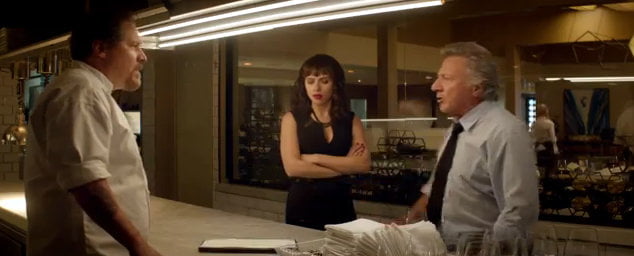
Figure 24: Restaurant owner, Riva, Hostess, Molly and Chef Carl Casper without hairnets in the kitchen
Another scene shows Inez calling while Carl and Percy are in the midst of preparing food on the truck and serving clients. Percy takes out the phone with his gloved hand and after speaking for a while, passes it to Carl, who does the same thing. There was no changing of the gloves, washing of hands, or other sanitizing action taken before continuing with the meal prep. The hazard here lies in the transfer of germs and bacteria from Percy’s pocket, the cellular phone, and both their mouths (which would have left salivary particles on the phone), to their hands and then to the food. Additionally, Percy got burned and licked his fingers to cool it, while preparing a sandwich to be sold.
Figure 25: Percy licked his fingers to ease the pain after being burned.
Throughout their journey, the guys made a stop at Texas OG Barbeque to obtain meat for their sandwiches. They each tasted it to determine if it was a good addition to the menu, however, they tasted from the very piece they planned to serve to customers. It was open and they were talking over it. This is another example of a very bad, unhygienic practice.
Figure 26: At Texas OG Barbeque Sampling the Meat
On the issue of hygiene, there is no evidence of toilet/bathroom facilities for the gentlemen to relieve/refresh themselves, and they were on the road, with no fixed place of abode, therefore, how did they keep themselves clean?
Finally, there were two scenes where it was observed that money was being exchanged in the open, in the vicinity of the food being prepared. Money is known for harboring microbes by the thousands, and the risk of cross-contamination is increased when handling fast food and money with the same gloved hands or without using hygiene measures (Michaels 2002). The article also cited that data accumulated over the years on the microbial status and survival of pathogens on food, points to a potential cause of sporadic cases of food borne illness.

Figure 27: In this image their heads are uncovered and money is being handled nearby.
Recommendation
- Education on foodborne pathogens and ways to mitigate them
- Always have your head covered when preparing and serving food.
- Always wash your hands before, during, and after the preparation of meals.
- Always wear gloves
- Store food at the correct temperatures
- Cook food at the correct temperatures
- Clean and disinfect surfaces and utensils regularly.
- Use separate knives/forks for raw meat as opposed to cooked meat
- Raw meats must be handled and separated from other types of food.
- Do not sneeze, cough or shout over food.
- Raw fruits and vegetables must be washed before peeling, cutting, cooking, or eating.
- Regular, thorough cleaning and disinfecting of vehicles or tools used to transport food.
- Persons with cuts or open wounds on their hands should not prepare food.
RISK ASSESSMENT
The following link displays the hazards mentioned in this blog in a tabular format that highlights who may be harmed by each hazard identified and how, its risk rating, the persons responsible for reducing risk as well as the timeframe in which the risk should be rectified.
Risk Assessment Table:
https://docs.google.com/document/d/1KKvtDoc9VCcjin-01358ojLtOe_yDNHC/edit
Conclusion
The movie “Chef (2014)” is an inspirational story about resilience in the midst of trials, family values, and loyalty. The business started was shown to be of excellent quality in terms of serviceability, features, durability, aesthetics, reliability, performance and perceived quality. Moreover the movie demonstrated a number of physical, chemical, biological, psychosocial, and ergonomic hazards which recommendations have been provided in this blog to assist in risk mitigation.

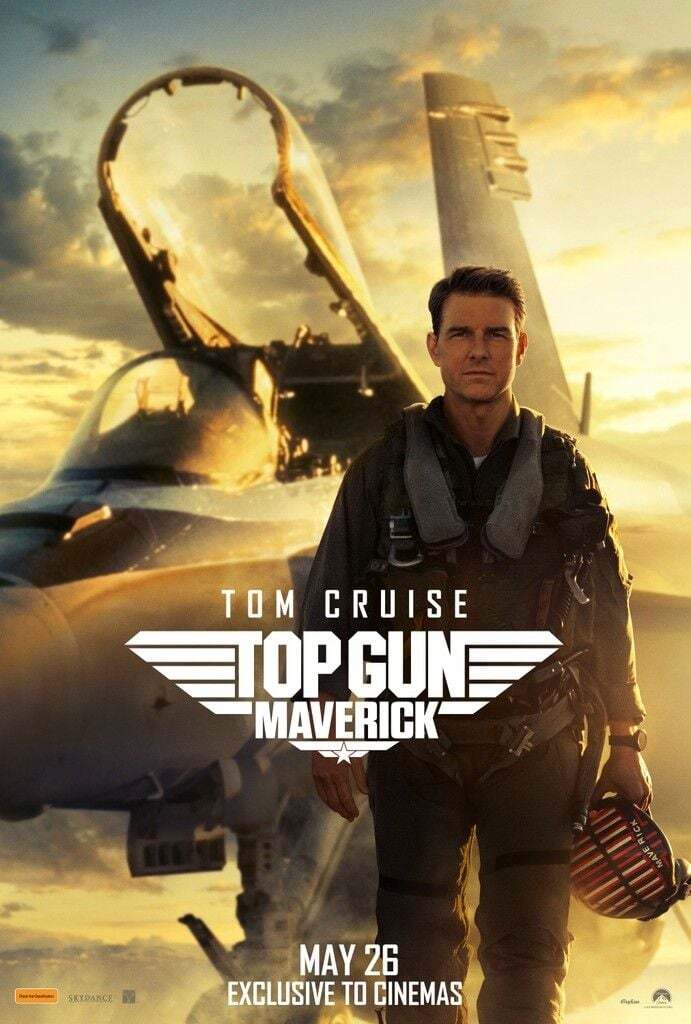


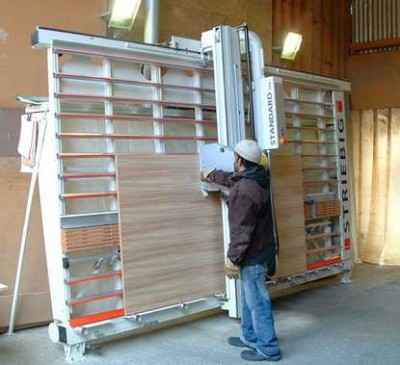










:format(webp)/https://www.thestar.com/content/dam/thestar/entertainment/movies/2014/09/25/the_equalizer_keeps_denzel_on_the_clock_and_on_the_money_review/equalizer_2.jpg)






